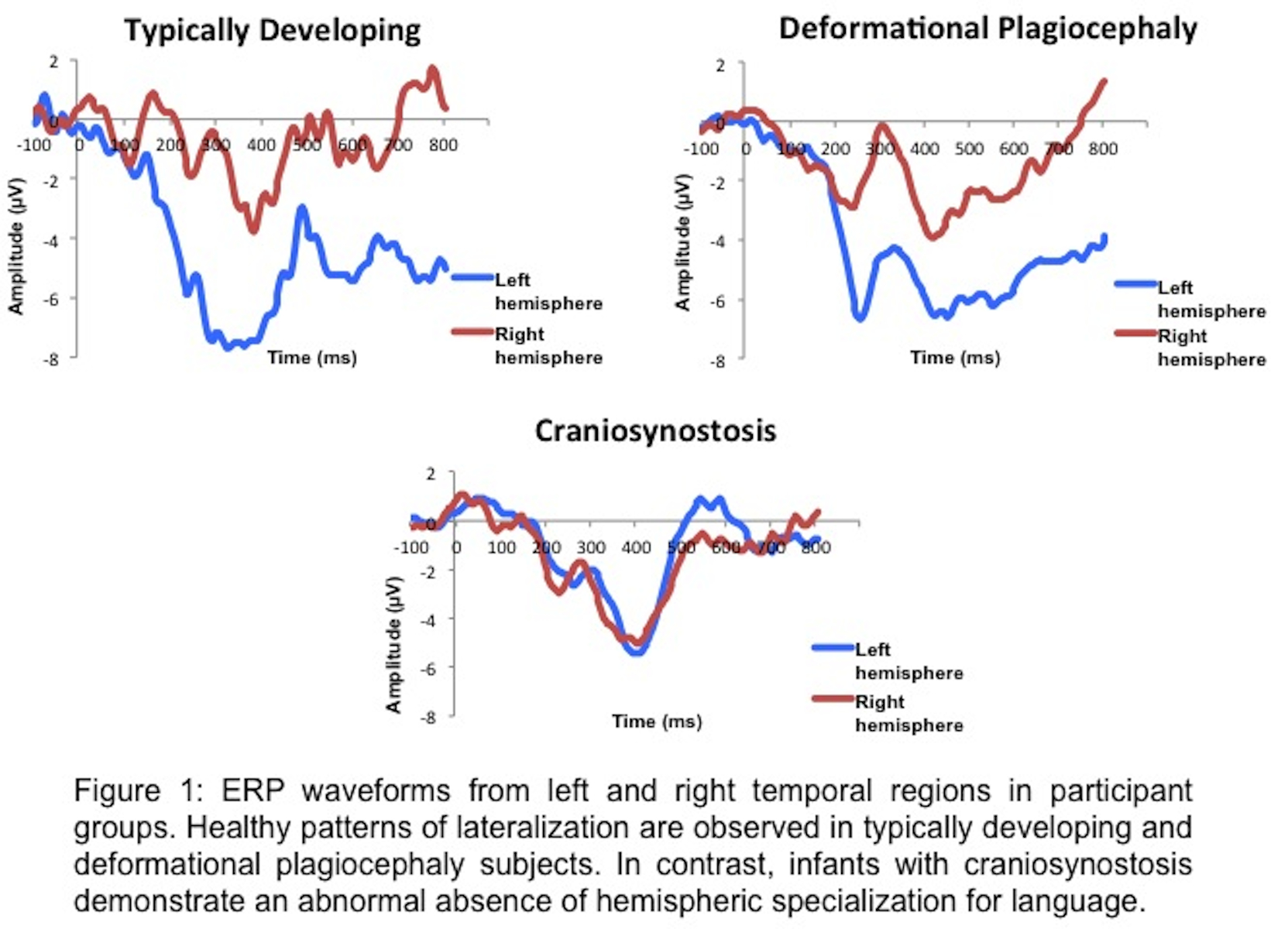|
|
 |
Back to Annual Meeting
Evaluating neural development in deformational plagiocephaly and craniosynostosis using event-related potentials
Peter Hashim, BA, Roberto Travieso, MD, Jordan Terner, MD, Marika Coffman, BS, Cora Mukerji, BA, Rachael Tillman, BA, Adam Naples, PhD, Derek Steinbacher, MD, DMD, Linda Mayes, MD, James McPartland, PhD, John A. Persing, MD.
Yale University School of Medicine, New Haven, CT, USA.
BACKGROUND:
Deformational plagiocephaly affects as many as 48% of otherwise healthy infants, but the developmental implications of the condition remain unclear. Previous studies based on the Bayley Scales of Infant Development have raised concern that affected infants comprise a high-risk group for cognitive delays. However, these assessments provide limited insight into school-age intellectual function due to their poor predictive value. Event-related potentials (ERPs) offer a non-invasive means to examine neural responses to stimuli and are effective in predicting long-term outcomes. Through their insight into neurologic networks, ERPs can also serve a valuable role in exploring brain dysfunction in non-syndromic craniosynostosis (NSC). Despite growing evidence on the adverse neuropsychological effects of NSC, the brain mechanisms underlying these long-term deficits remain poorly understood. This study aimed to investigate language processing in infants with untreated NSC or deformational plagiocephaly. Our goals were to use ERPs to examine whether infants in these clinical groups displayed expected developmental patterns of hemispheric specialization for language.
METHODS:
Three groups of infants under 12 months participated in this study: 10 infants with deformational plagiocephaly, 10 infants with NSC, and 10 typically developing controls. ERPs were recorded with a 128 channel HydroCel Geodesic Sensor Net during auditory presentations of English phonemes. ERP analysis contrasted mean amplitudes recorded over the right and left temporal regions to evaluate hemispheric lateralization of neural response to speech, a marker of normative language development.
RESULTS:
Repeated measures ANOVA revealed a significant Group x Hemisphere interaction (p < .05). Post-hoc paired samples t-test showed hemispheric lateralization in typically developing controls (p < .05) as well as in participants with deformational plagiocephaly (p < .05; Fig. 1), results consistent with normative patterns of speech sound processing. In contrast, participants with NSC failed to exhibit lateralized responses (p = 0.78), indicating deviant or delayed language processing.
CONCLUSIONS:
Our results support the hypothesis that deformational plagiocephaly may be a developmentally benign condition without significant long-term impact on language function. In addition, we present novel electrophysiological data on the cognitive dysfunction in untreated NSC. Our results suggest that the increased prevalence of reading and spelling learning disabilities seen in this condition may be related to early abnormalities in the brain systems governing language processing.

Back to Annual Meeting
|







